Backyard Chickens
Backyard Chickens
Tweet
Raising chickens in your yard can be a great way to cultivate meat and eggs for you and your family. It can be done relatively cheaply and easily, as long as you keep them in a space and numbers that you can successfully manage. Chicken’s needs for food and shelter are easily met, and they will provide a source of entertainment and pleasure for those raising them. They can make great pets for the family also. Spending money at the grocery store on poultry and eggs will be greatly reduced as well. This article will examine the basics of raising chickens in your backyard.
1. Selecting a Breed
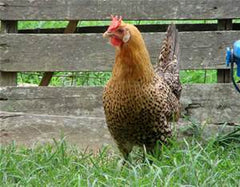
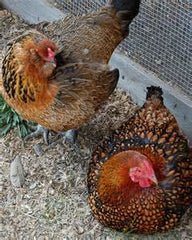

This is dependent on what your main purpose of raising chickens will be. Some breeds are better for yielding eggs, while others are better for meat. Some breeds are also designed to give you the best of both meat and eggs. Mediterranean class breeds are typically the best for egg production. They tend to be smaller in size and weight because they focus mainly on egg laying rather than accumulating mass for meat production. They usually lay white eggs.

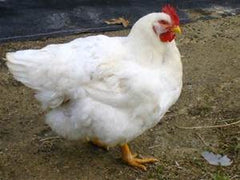

The Cornish Cross and Broiler varieties typify meat breeds. These types have outstanding growth rates and grow broad, plump breasts. They are not as resilient as some other breeds though because of their rapid growth rates, and are more prone to die from sudden bouts of stress. They can be ready for slaughter in as little as 80 days.
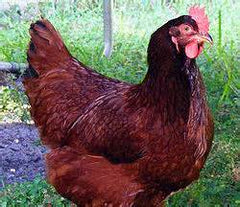

The dual-purpose breeds are desirable for many people who engage in backyard chicken raising. They typically lay brown eggs and they grow fast enough to provide meat for food. New Hampshire and Rhode Island Reds are included in these breeds. These types can be ready for slaughter in as little as 80 to 98 days.
2. Finding Stock
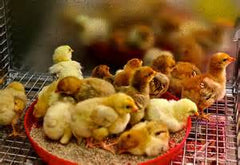
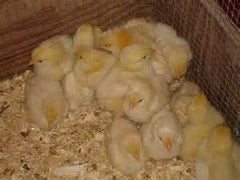
There are several different ways to begin populating your stock. Just-hatched chicks can be sent through the mail from large hatchery companies. However, seeking out smaller regional or local hatcheries can be a better option in terms of quality and service. You can also get chicks and grown birds from farmer’s co-ops, or from other enthusiasts locally who will sell some of their own stock. Breeding your own stock is also an option, but this requires more equipment, time, and attention than the other options.
Here is a good source for buying chickens online and other chicken related merchandise.
3. Shelter
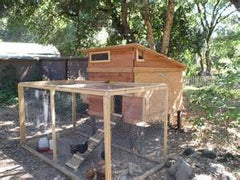

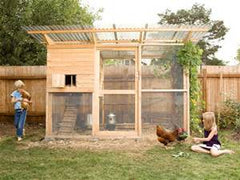
Housing for chickens is not complex and does not require any specialized equipment. An existing shed or outdoor structure can easily be converted to a coop. Coops are not difficult to build and can be bought as well. The most important factors are that the birds are protected from the elements. The inside needs to be as dry as possible. Also important are some platforms for them to roost. Be sure to give them plenty of space in their coop as well. If they have constant access to adequate space outside the coop to roam, you can get away with less space inside the coop. 3-5 square feet per bird is ideal. An earth floor or high-carbon litter is crucial for flooring inside the coop. Oak leaves, wood shavings, sawdust, and twigs make a good base for litter flooring. The litter can be removed once or twice a year and composted if you desire. Adequate ventilation is necessary, as well as some spots that direct sunlight can enter. Do not forget to make your chicken coop inaccessible to predators.
4. Feeding the Chickens


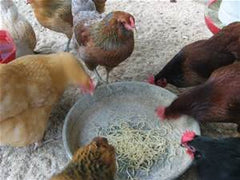
There are many commercial poultry feeds to buy, with varying degrees of quality. Making your own feed is an option as well. It’s important to remember that chickens are fed different feed mixes at different stages of their growth, so be sure to feed them the appropriate mixtures. Avoid feeding your chickens a formula containing antibiotics. This is unnecessary in a small batch of chicks and this can have detrimental long-term consequences for both animal and human health. It is also important that the chickens have access to green forage. Some sprouts or ground up kelp is very beneficial to the chickens. When birds are confined in the coop during cold winter months, its important to make sure they have green forage and small bits of stone and gravel to use to grind up feed in their gizzard. Chickens, like all animals, need access to fresh water at all times. There are many types of watering devices, but the important thing is to keep the water as clean and litter-free as possible. Placing it above ground level helps. Make sure that wet spots don’t develop around the water and disperse any that you find.
5. Egg Harvesting
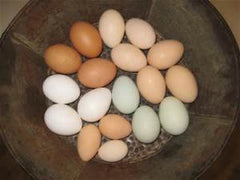
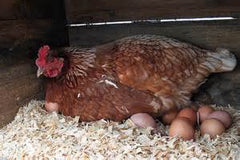
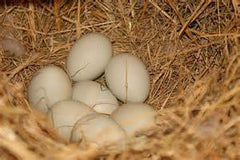
If you plan on collecting eggs, nest boxes are a must. These need to be positioned above floor level and kept lined with plenty of clean straw. Be sure to collect the eggs frequently. If too many eggs begin to collect, it increases the likelihood of them being broken or eaten by the chickens. This is a hard habit to break once a chicken develops it. If eggs break, promptly clean up the shell and yolk and change the straw. Avoid washing your eggs if possible and let them air dry before putting them away. If manure or other sediment soils them, you can wipe them with a damp cloth. Fresh eggs can be stored for up to a month in refrigeration. If you keep around ten hens, you will have more eggs than you know what to do with.
Here is a great source for finding out more about raising backyard chickens.

